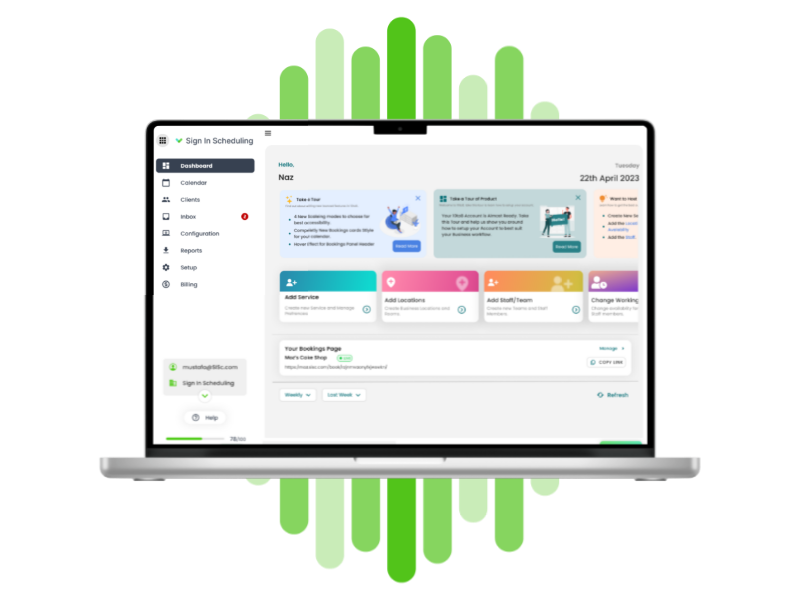A lot of people dread going to the doctor. Some people have had such a negative patient experience...
The New Frontier of Patient Experience
The COVID pandemic has changed the future of healthcare forever. Now, more than ever before, Healthcare professionals must focus on patients as people, not just numbers on a screen.
In order to provide the best possible patient experience, it’s important to consider what patients want and need from their healthcare providers. A digital-first approach can create an open-door framework that achieves the best outcomes for both.
But why is this important? Because the right patient experience can stop customer loss, improve employee satisfaction and raise efficiency across all areas of the healthcare industry!
What is patient experience and why should you focus on it?
Patient experience is a patient’s perception of their interactions within the healthcare system they’re using. This includes all aspects of their care, from making the first appointment to receiving treatment and any follow-up care. Patient experience is important because it can have a direct impact on their overall health and wellbeing. In fact, studies have shown that patients who have a positive experience with a healthcare system are more likely to adhere to their treatment plan and are less likely to experience complications.
Given its importance, healthcare providers should be aiming to deliver a positive patient experience as standard. There are many ways to do this, including providing clear communication, offering patient-centred care, and addressing patient concerns in a timely manner. By focusing on patient experience, healthcare providers can improve patient satisfaction and health outcomes.
How do you go about understanding your patients’ experiences and needs?
There are a few different ways you can go about understanding your patients’ experiences and needs. One way is to administer patient surveys which enables you to collect important data on patients’ experiences. This data can then be used to identify areas of improvement.
Another way to get insights into patient needs and experiences is to hold focus groups. These allow you to hear directly from patients about their experiences, both good and bad. This qualitative data can provide valuable insights into patient needs and experiences.
By taking the time to understand what it is that your patients want, and if you are meeting their needs, you can work to ensure that the healthcare experience you’re providing is hugely positive and beneficial.
Example ways to improve the patient experience in your clinic or hospital setting
As we’ve seen, there are a number of ways to identify where improvements need to be made to provide a better patient experience. What’s vital is to act on what you discover.
Using what you’ve learned, you can then make changes that improve a patient’s overall experience. Some of which may be quite simple and straightforward to accomplish. For example, you may find that patients are unhappy with the wait times in your clinic. In this case, you could work on strategies to help reduce wait times, such as hiring additional staff or staggering appointment times. By making small changes like these, you can significantly improve patient satisfaction levels.
How can you ensure that all members of your team are contributing to a positive patient experience?
Creating patient experience standards is one way to ensure all members of your team are contributing to a positive patient experience. These standards should be based on the feedback you’ve received from your patients. For example, your standards might include ensuring that all patients are greeted within 30 seconds of arriving at your practice. Or, you may require all team members to smile and make eye contact. By setting patient experience standards, you’ll be able to hold all team members accountable for providing a positive experience for every patient who comes to your practice.
Are there any challenges or obstacles that you may face when trying to improve the patient experience?
One obstacle you may face with patients is their resistance to change. Most people are creatures of habit and may not be receptive to new processes or procedures, no matter how much better they may be for their welfare and experience.
Or perhaps there’s a lack of buy-in from your team members. If they don’t see the value in providing a great patient experience, they probably won’t be willing to put in the extra effort required to achieve it.

Additionally, you may need to overcome budgetary constraints in order to implement patient experience initiatives. Luckily, there are ways to overcome all of these challenges.
Patients can be won over with clear and concise explanations of how new processes will benefit them. Team members can be bought into the patient experience by showing them data that demonstrates how happy patients lead to increased profitability. And finally, budget restrictions can be offset by targeting high-value initiatives that have a high ROI. By taking these obstacles head-on, you can successfully improve the patient experience at your organization.
What are some best practices for creating a culture of patient-centred care?
When it comes to creating a patient-centred culture, there are a few best practices that every organization should keep in mind. First and foremost, patients should always be seen as people. They need to be treated with dignity, respect and compassion at all times.
Secondly, patient comfort should always be a top priority. This means providing them with amenities and a level of service that make them feel content and at ease, such as comfortable waiting areas, private rooms and friendly staff. By following these best practices, organizations can ensure that their patients always have a positive experience.
The patient experience is a new frontier in the healthcare industry, and if you focus on patients as people instead of just numbers or cases, you can improve all areas of your clinic or hospital. By understanding your patients’ experiences and needs, you can make sure that they are getting the best possible care.
Improving the patient experience can be challenging, but it’s worth it to see the positive impact it has on employees and efficiency across all areas of your healthcare offering. Are you ready to embark on this journey?
10to8 in Healthcare
Around *60% of US healthcare organisations are actively developing their **HIPAA compliant digital front door strategy. 10to8 is enabling US healthcare providers to:
- Reduce no-show rates by 85%
- Save $1000’s per month
- Increase ROI up to x30+
Client Spotlight: CIC Health facilitates over 532,000 Covid tests and over 350,000 vaccinations while providing services to 375+ organizations across the US.
Book a demo with us today to see how you can start to improve your PX, now.
Follow us on LinkedIn for more tips and advice!






Blog comments